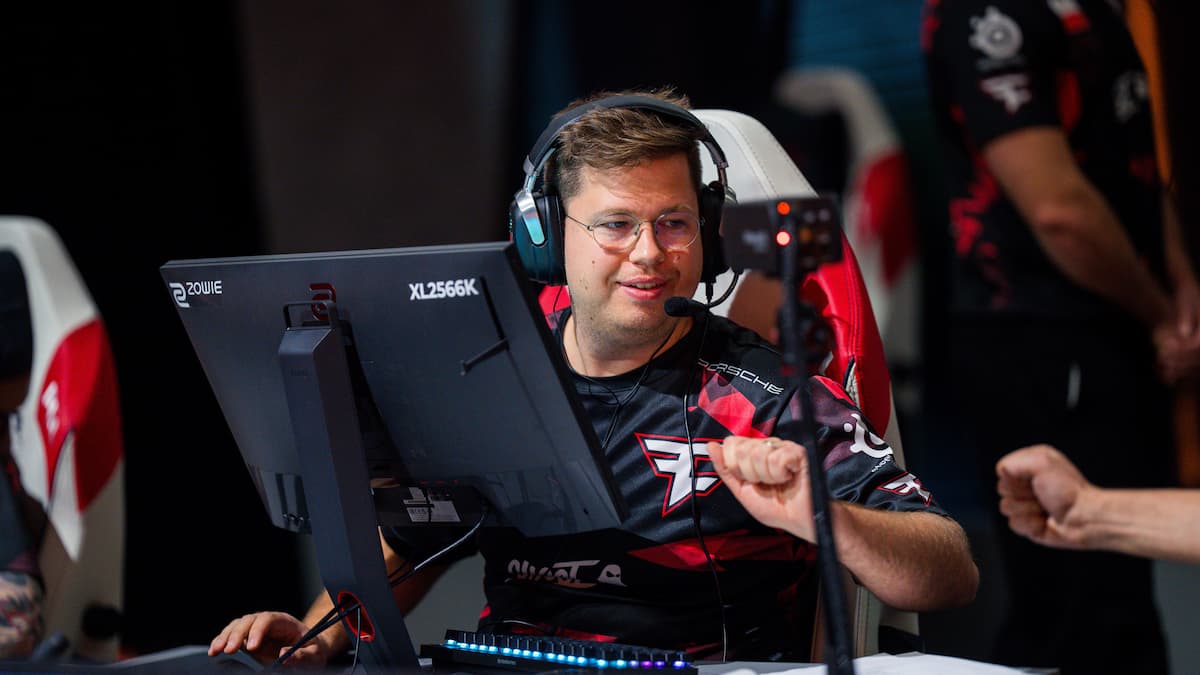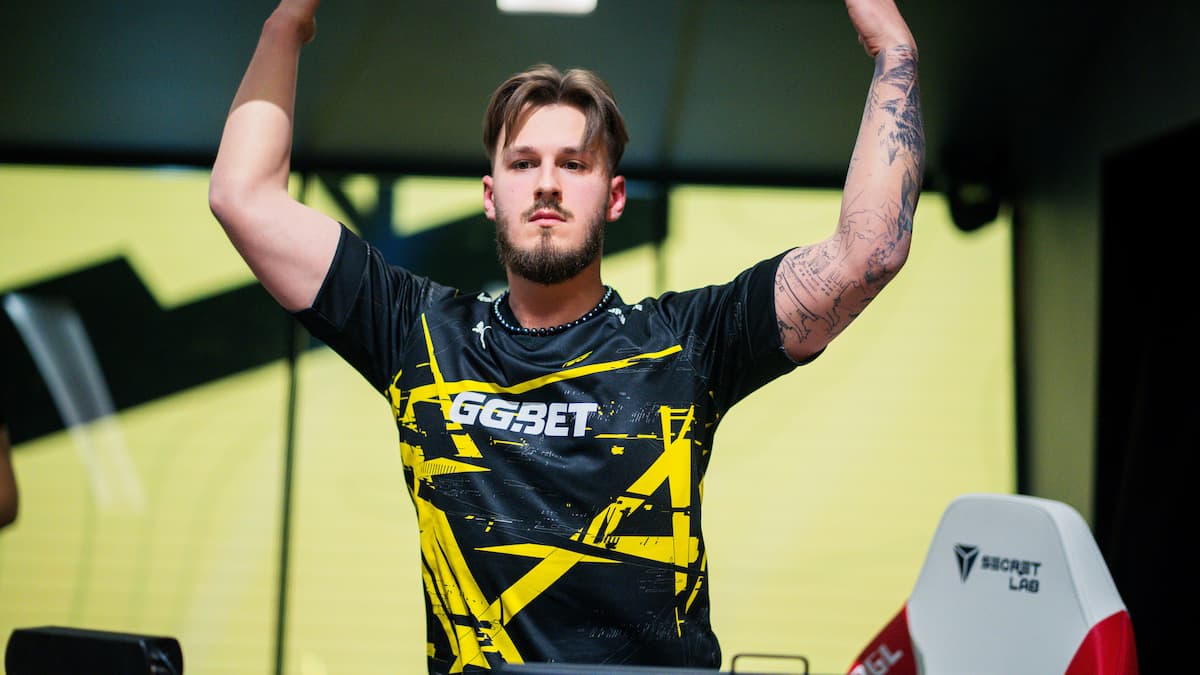Consistency is possibly the most idolized trait by Counter-Strike: Global Offensive pundits when searching for the best players in the world, and for good reason. The most legendary individuals don’t earn their namesake by single rounds of domination; they earn it through expansive stretches of imposing their will and pulling off paradigm defining plays with shocking regularity. Christopher “GeT_RiGhT” Alesund, Nicolai “dev1ce” Reedtz, Olof “olofmeister” Kajbjer Gustafsson all boast their historical spots as some of the most talented players to touch the game, due to their uncanny knack for maintaining a consistently high level of play through thick or thin.
This consistency though, doesn’t bring with it the instant gratification of a big play. Finding one or two kills every round, and achieving those kills through superior positioning and solid use of utility, doesn’t inspire the masses to suddenly swarm a player with praise. The congratulatory tweets will come after the game when the consistent frags have put him on top of the scoreboard with a ridiculous ADR and high kill count. This type of non-stop round-to-round grinding of frags is the foundation of some of the greatest teams in the history of the game. It is one of the most difficult tasks to fulfill as a player, which is why it is valued so highly by those who appreciate a team dynamic.
But, this persistent grind and fundamentally flawless grasp of Counter-Strike can’t be the only ingredients in the making of a historically untouchable side. In order to go from “good” to “great” to “the greatest,” a team needs that extra push; an unquantifiable, unpredictable volatility. Traditional outlets call this the “X-Factor” – a little cliché, but a suitable description nonetheless.
Teams shouldn’t solely rely on these ephemeral bursts of ostentatious individual skill, however, as it is a fickle mistress. G2 Esport’s tournament run in 2016 is a perfect example of just that; glorious highs followed by an inescapable low. Considering this need for balance, the usual approach in incorporating this “X-Factor” is to have a solid core of fraggers who act as an ever-present pressure and grinding pestle, that then allows the single ace up the sleeve to sporadically win rounds that the team had no right to win (while occasionally losing rounds the team had no right to lose as well).
The most successful of these volatile players is usually the third star of their team. A superstar at the front, consistent second star behind, and the volatile third man rounding out the main fragging group. For these tertiary idols, it is always feast or famine, pain and ecstasy, everything or nothing.
In late 2014/early 2015, Jesper “JW” Wecksell is possibly the most famous of this streaky archetype. Wielding the AWP behind his superstar Olofmeister and secondary star Freddy “KRiMZ” Johansson, JW’s sniping style in his prime is credited as one of the most aggressively and unpredictable at the highest levels of play. Even though the AWP nerf limited the effective mobility of the big green, it didn’t stop JW from busting through smokes and Molotovs as if he were the DEA on a drug bust.
The success/failure rate of these pushes, on-paper, would likely be abhorrent. The risk of losing the biggest economic investment of the round for just one kill is, from this clinical, statistical standpoint – stupid. If you were to take the Moneyball approach to fielding a player like JW, it would be difficult to make a case to retain him on the team. However, this cold stance founded on numbers and monochromatic graphs does not take into account the psychological factor. Even if one of these infamous pushes fail – which they can, and do – the sheer blasé, cool and devil-may-care shock it can send into the opposing team fills the following rounds with second-guessing and uncertainty.
These unwarranted and unpredictable plays instills a new fear into the enemy and the fear of the unknown. It breaks the paradigms of what they think players are capable of doing, forcing them to redefine the boundaries of their opponents rationality and logic. This splattering of emotions is an impactful strike, even though it might be intangible and difficult to define. What’s more, aggressive pushes can attain a certain tangibility when they actually work, creating a man advantage with the added benefit of psychological damage as well.
JW isn’t the only players that can boast this niche role, as Brazilian AWPer Henrique “HEN1” Teles savaged North America with a similar style of play. With his rifling primary star João “felps” Vasconcellos out front and passive clutcher Ricardo “boltz” Prass behind, HEN1 is a player who is a perfectly concentrated version of JW’s play style, but on a lower tier of play and against weaker competition. His utilization of the instinctual, dynamic AWP style in a playing environment similar in structure but different in makeup shows the far-reaching implementation and utilization of this playing archetype.
They are the players who are forever in the moment. Constantly searching for opportunity, or lack thereof, to make their subreddit front-page play. Their careers are ones defined by the earth-shattering screams of casters and fans rather than the analytical breakdown of their impact. They demand the attention of eyeballs across the world, and when they fail or succeed, they take on a level of hate or praise equal to the audience they created through their otherworldly low-percentage plays.
Both JW and HEN1 grab the most valuable and protected economic asset of the game and thrust it into a crucible of risk, reward, and uncertainty. This constant edging of risk will – over a long enough period of time – breakdown the confidence of the player that chooses to take this path, as evidenced by the current state of JW who uses the rifle more often than not, and holds sniping angles with boring normality and efficiency. This highly specific and tailored role does not lend itself towards sustainability or to those who look to maintain a healthy mental state, which is why when we do see a player emerge with an uncanny knack for risk-taking, we should look to praise rather than criticize.
There should be an equal amount of romanticization for those players that choose to live within the confines of the instant present and those that look to live within the space of an entire career. If we don’t pay attention to the players that are constantly playing in the moment, then in a blink of an eye, that moment and that player’s peak, can disappear into the molecular anonymity of the forgotten past.
Written by Max Melit – who can be found on Twitter @max_melit or via email at maxmelit@outlook.com
Photo credits: Northern Arena






Published: Dec 26, 2016 09:10 am